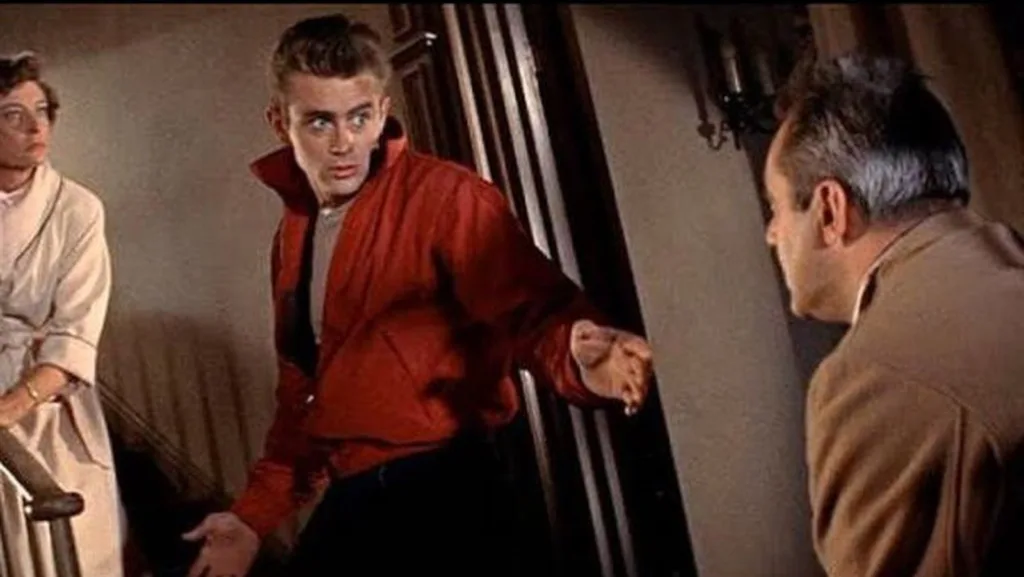Released in 1955, Rebel Without a Cause remains one of the most iconic films in American cinema. Its influence extends far beyond its immediate era, leaving a lasting imprint on various facets of culture and media, from West Side Story and Elvis Presley to George Lucas, David Bowie, Akira, Paula Abdul, and even the cult phenomenon The Room. At its core, the film presents a raw and poignant exploration of teenage angst, a theme that has resonated through generations. What makes Rebel Without a Cause even more compelling is its undercurrent of same-sex desire, which, despite the efforts of censors and studio executives to erase it, is woven into the film’s narrative and reflects the personal experiences of its creators.
A Cinematic Revolutionary
Directed by Nicholas Ray and starring James Dean, Natalie Wood, and Sal Mineo, Rebel Without a Cause broke new ground in its portrayal of youthful rebellion and disillusionment. The film’s narrative revolves around Jim Stark (Dean), a troubled teenager who struggles to find his place in a world that seems increasingly alien and hostile. Alongside him are Judy (Wood), a girl grappling with her own sense of identity, and Plato (Mineo), whose own struggles and desires are subtly but powerfully depicted.
The film’s depiction of teenage rebellion was revolutionary. It eschewed the idealized portrayals of youth prevalent in the 1950s, opting instead for a more raw and authentic representation of adolescent turmoil. The fast cars and tough talk of the film’s characters served as a veneer over deeper issues of alienation and yearning, reflecting broader societal tensions.

Subtext and Censorship
What sets Rebel Without a Cause apart is its nuanced portrayal of relationships that can be interpreted through a queer lens. Despite the film’s mainstream acceptance, its subtext has sparked considerable discussion among critics and scholars. The intense bond between Jim and Plato, in particular, is often read as a depiction of same-sex desire. The film subtly suggests a romantic undercurrent in their relationship, which was a bold move given the era’s stringent censorship rules and the Hollywood Production Code’s demands.
Studio executives and censors were acutely aware of the potential implications of these elements. They issued furious demands to cut anything that might be construed as queer, reflecting the prevailing attitudes towards homosexuality in the 1950s. Yet, despite these pressures, the film’s creators found ways to embed their personal experiences and desires into the narrative, creating a subversive work that challenged the era’s norms and expectations.
Rebel Without a Cause is often celebrated for its groundbreaking portrayal of teenage rebellion and disillusionment. Directed by Nicholas Ray and starring James Dean, Natalie Wood, and Sal Mineo, the film is a cultural touchstone that has influenced generations. While its depiction of adolescent angst is well-known, a subtler, less overtly discussed aspect of the film is its homosexual subtext. This element, which was particularly controversial given the era’s rigid social norms, adds layers of complexity to the film’s characters and relationships.
A Blueprint of Teenage Angst
Rebel Without a Cause provided a blueprint for exploring teenage angst that has reverberated throughout American culture. Its depiction of troubled youth and their quest for identity paved the way for future films and media that delved into similar themes. For instance, the themes of rebellion and disillusionment in Rebel Without a Cause can be seen echoed in the musicals of the 1960s, such as West Side Story, which borrowed from the film’s raw emotional power and its portrayal of young people caught in the grip of societal conflict.
Elvis Presley’s rebellious persona in the 1950s, while more polished and commercialized, was also a product of the cultural shift initiated by Rebel Without a Cause. The film’s impact extended to pop culture icons like David Bowie, who incorporated its themes into his music and persona, crafting characters and narratives that mirrored the film’s exploration of identity and alienation.
Influence on Modern Media
The legacy of Rebel Without a Cause extends into contemporary media, influencing a wide array of artists and creators. For instance, Akira Kurosawa’s cinematic style, while distinct, reflects a nuanced understanding of human emotion and conflict that echoes the emotional depth of Ray’s film. Similarly, Paula Abdul’s music videos often incorporate themes of youthful rebellion and self-expression reminiscent of the film’s impact.
Even cult classics like The Room, directed by Tommy Wiseau, owe a debt to the raw emotionality and unfiltered portrayal of human relationships pioneered by Rebel Without a Cause. Wiseau’s film, though often seen as a comedic disaster, shares with Ray’s film a commitment to exploring the human condition, albeit in a far less conventional manner.
The Enduring Legacy
Rebel Without a Cause stands as a testament to the power of cinema to challenge societal norms and evoke deep, often unspoken emotions. Its exploration of teenage angst and longing has influenced countless artists and filmmakers, shaping the cultural landscape in profound ways. Despite the efforts to censor its queer subtext, the film’s ability to convey complex emotions and relationships has ensured its place as a groundbreaking work in the annals of film history.
In essence, Rebel Without a Cause is not merely a film about rebellious youth; it is a profound exploration of human desire, alienation, and the search for identity. Its impact continues to be felt across various media and cultural expressions, affirming its place as a seminal work that resonates through the decades.